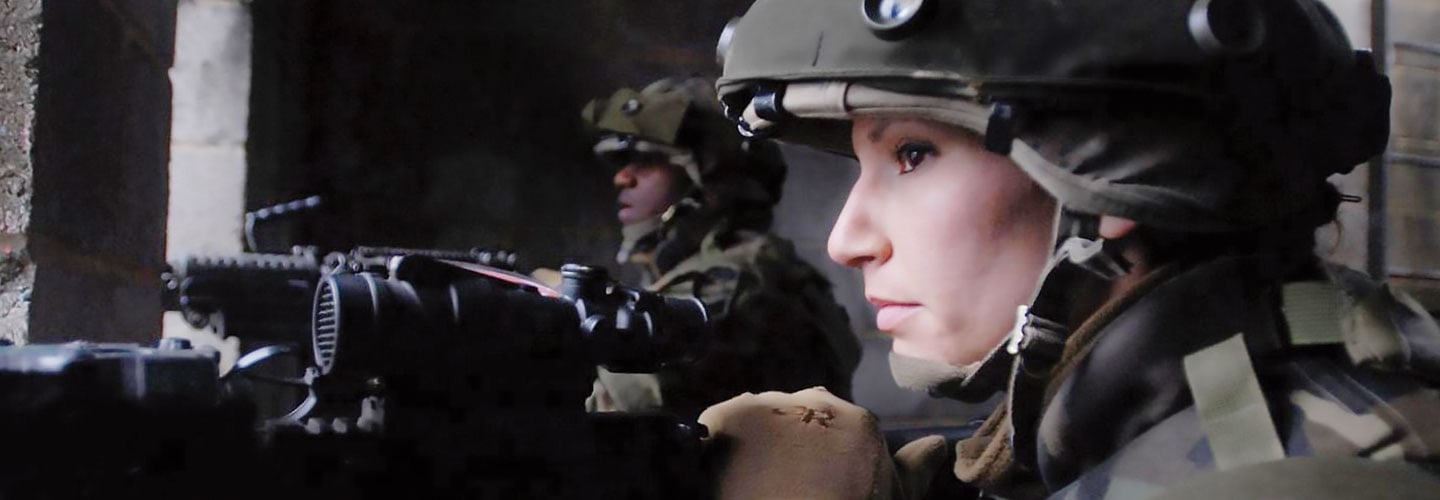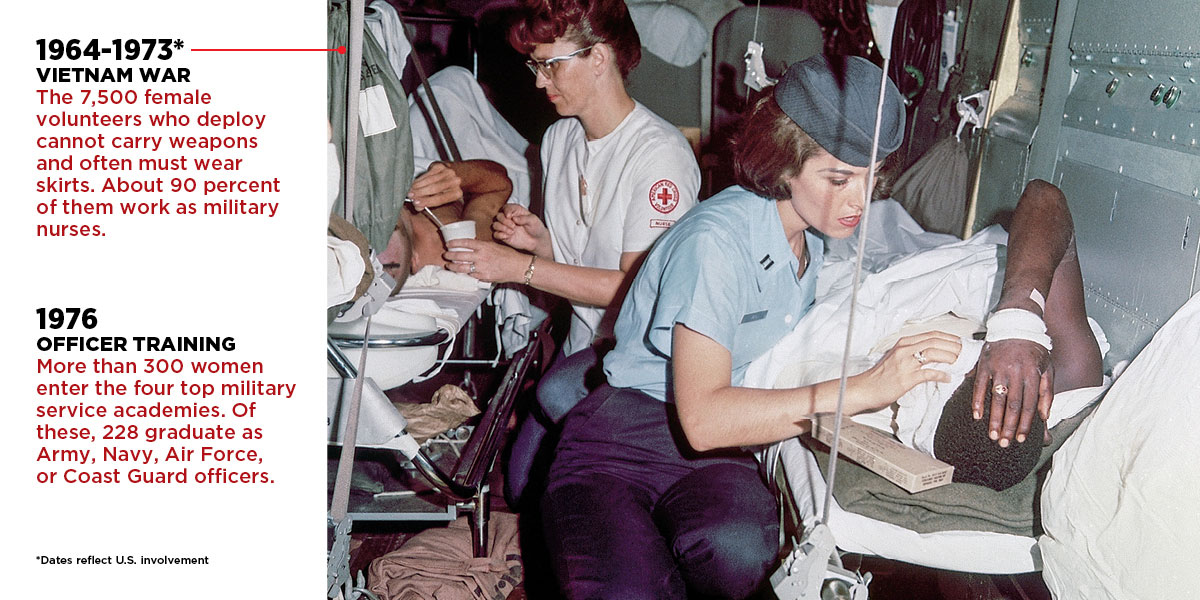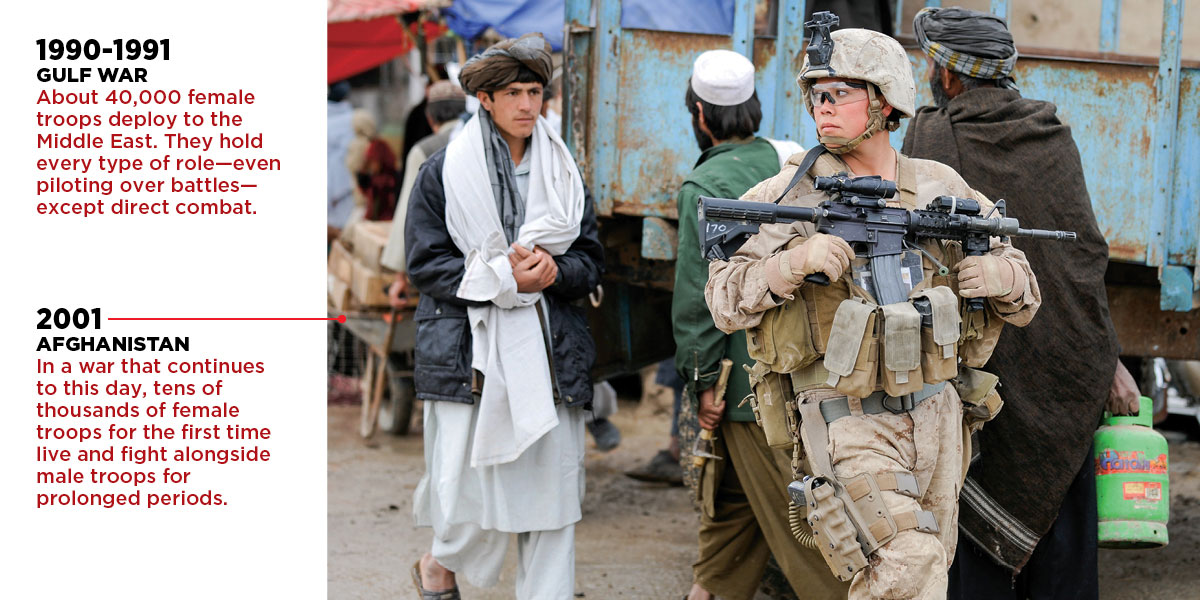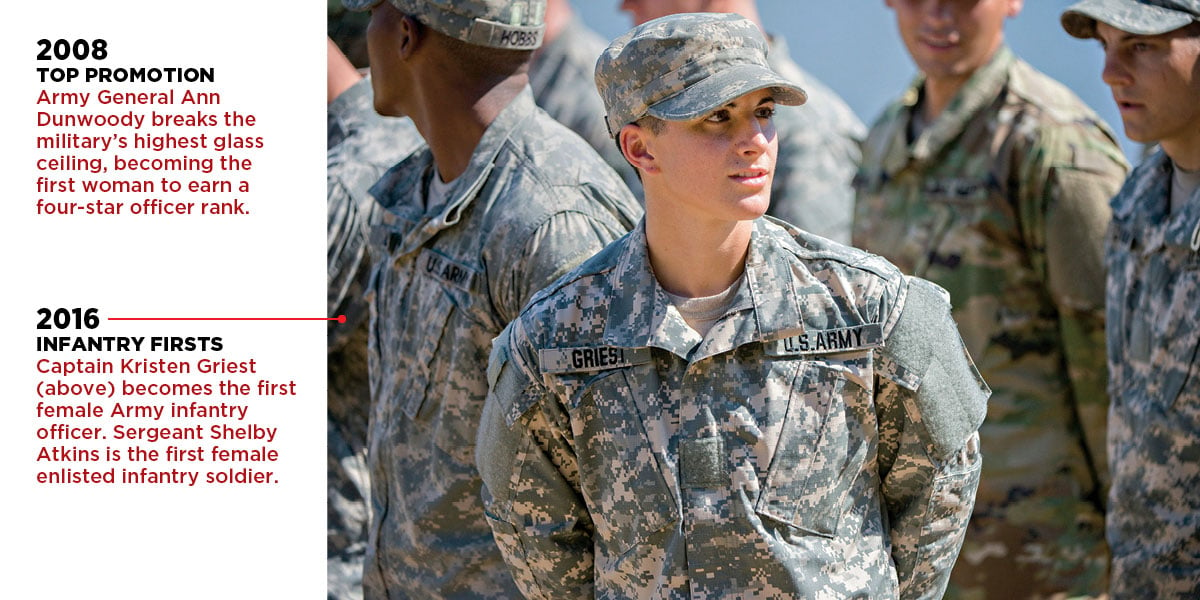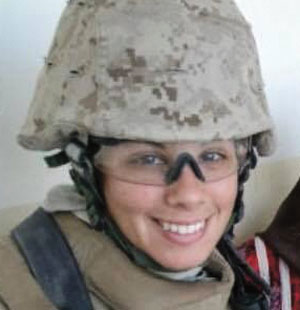
Marine Corporal Katherine Montalbano in Iraq in 2008
As a Marine stationed in Iraq, Corporal Katherine Montalbano did not shy away from the action. She fired machine guns, dismantled enemy weapons, and searched locals at checkpoints.
Yet unlike the male Marines she served alongside back in 2008, Montalbano wasn’t considered a member of the
Montalbano and other female troops earned praise, but it took nearly another decade for the U.S. military to officially let women serve in combat roles. In January 2016, the Department of Defense opened all combat positions in the Army, Navy, Marine Corps, Air Force, and Coast Guard to female troops.
Since then, many women have signed on for once-forbidden roles. They are driving tanks, throwing grenades, leading troops into battle—and making history. Just this past spring, a group of women became the first to graduate from U.S. Army infantry training, a milestone two centuries in the making. And in September, the first female Marine completed the Corps’s infantry officer program, one of the toughest in the military.
The progress doesn’t surprise Montalbano. “I have seen women knock out pull-ups like it was nothing and take down a male during hands-on training,” she says. “We are all trained the same.”
Still, the gender integration of the military is far from complete. Though hundreds of women have earned combat spots, they still make up just a small fraction of U.S. combat troops. Some elite military groups, such as the Navy SEALs, haven’t yet had a woman qualify. In addition, some people continue to argue that women have no place on the battlefield at all.

